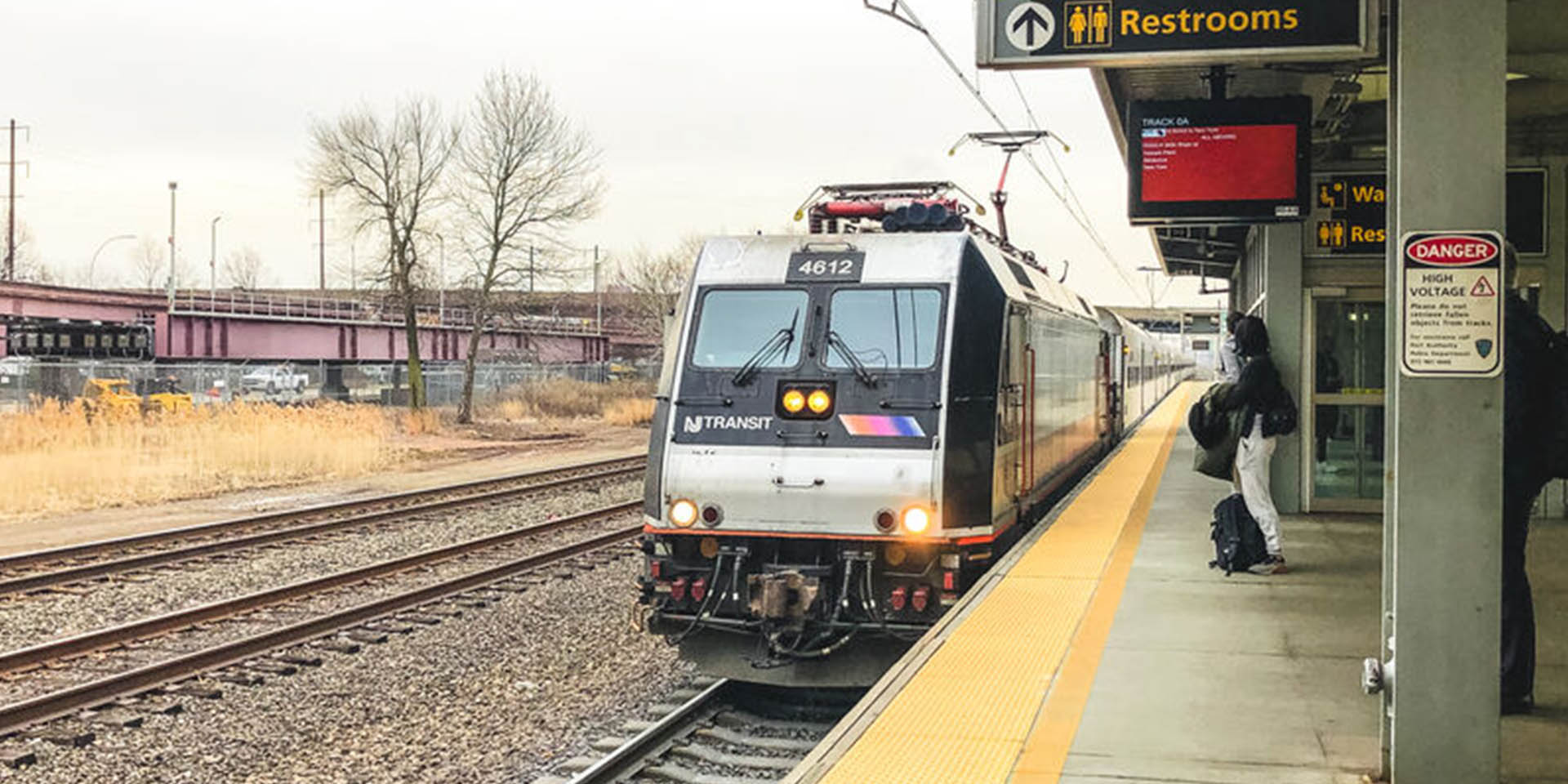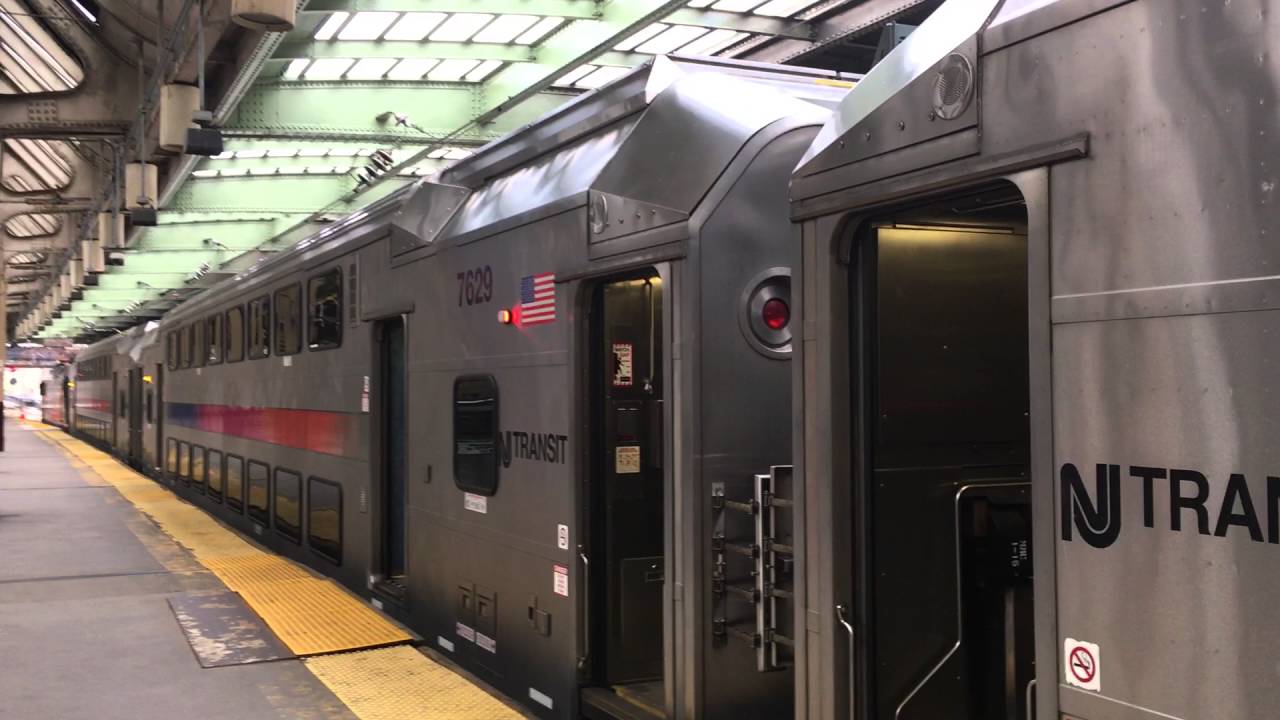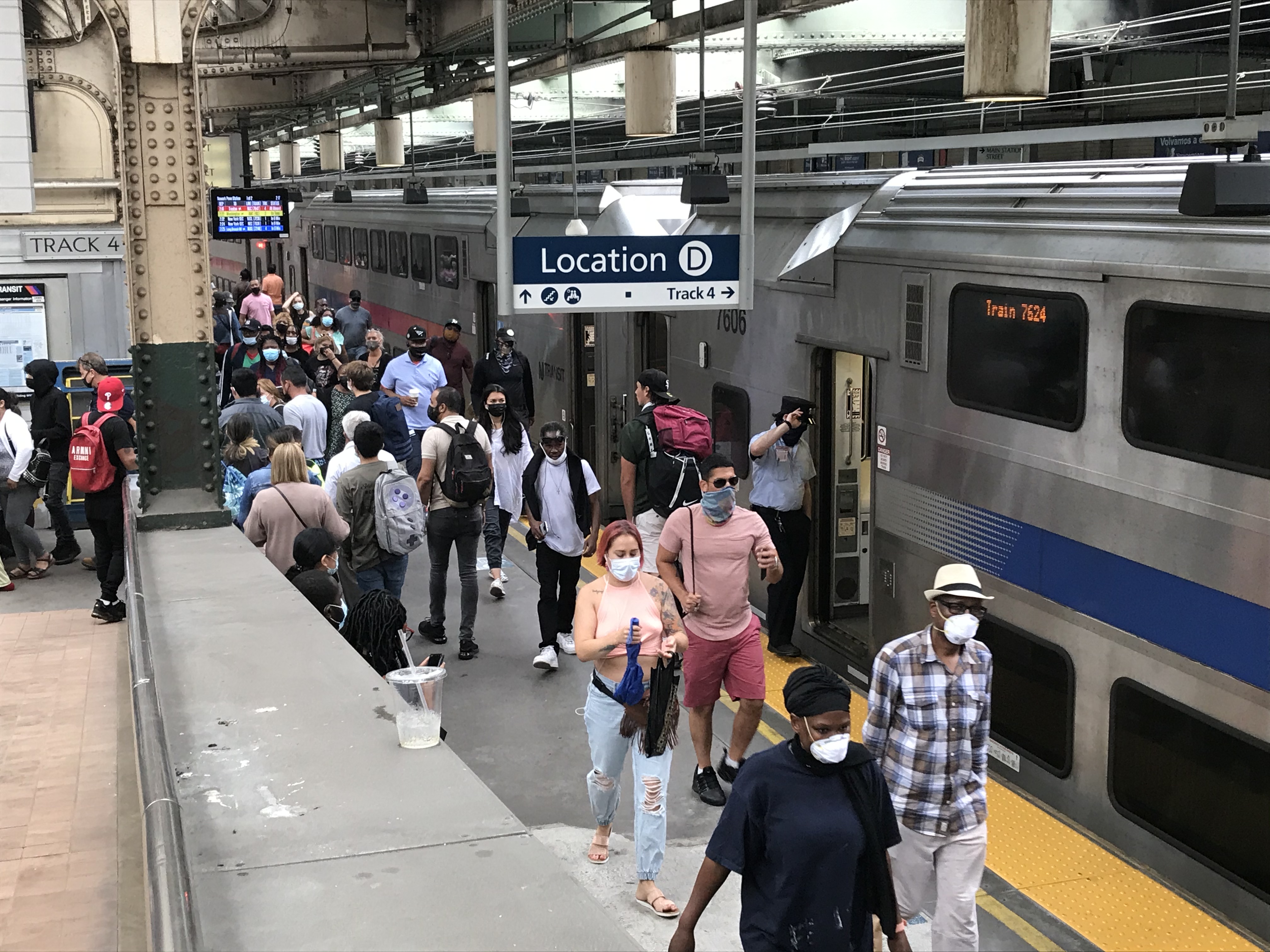

The result of all of this capital investment is a 476-mile system comprised of nine lines and two branches serving 162 stations. The RiverLINE uses a portion of the Camden & Amboy, New Jersey’s first railroad.

In March, 2004, NJ Transit opened its 34-mile RiverLINE, a diesel-powered light rail line linking the state capital at Trenton (incuding a stop at NJT’s Northeast Corridor station) with the city of Camden, and a connection to the Philadelpia-Camden-Lindenwold PATCO rapid transit system. The station cuts commuting times to midtown Manhattan by 15-20 minutes for commuters on diesel-powered routes. The station enables riders to transfer between trains on electrified routes serving New York Penn Station and Newark, and trains on diesel-powered routes serving Hoboken Terminal. NJT’s routes were further knit together on September 6, 2003, with the opening of a $450 million transfer station at Secaucus Junction in the New Jersey Meadowlands.

Diesel-powered trains were rerouted off the Boonton Line at Montclair (the portion of the Boonton Line east of the new connection was later taken out of service) and onto the Montclair Branch to travel to Hoboken via Broad Street Station in Newark. As part of the project, the Montclair Branch’s electrification was extended from downtown Bay Street station to Montclair State University, enabling electric trains to provide direct service to New York Penn Station. NJ Transit and Amtrak began serving Newark International Airport on October 21, 2001.Īnother route amalgmation occurred on Septemwith the opening of the $63 million Montclair Connection, a 1,500-foot link between the former Boonton Line (an Erie Railroad property) and the Montclair Branch (former Lackawanna) in the city of Montclair. On June 10, 1996, NJ Transit inaugurated MidTOWN Direct service over the Kearny Connection, enabling electric trains from Dover and Gladstone to operate into Penn Station, New York. Service on the Boonton Line was extended 8.9 miles from Netcong to Hackettstown on October 31, 1994. The Waterfront Connection, opened September 9, 1991, allowed diesel-powered North Jersey Coast Line trains to operate into Hoboken Terminal. (Passenger trains had served Atlantic City until 1982.) When Amtrak later discontinued its Atlantic City trains on April 1, 1995, NJ Transit extended its commuter service west from Lindenwold to Philadelphia’s 30th Street Station. Amtrak had restored the line and inaugurated rail service on May 22, 1989. On September 17, 1989, NJ Transit began operating commuter service between Atlantic City and Lindenwold. On the North Jersey Coast Line, catenary was extended five miles from South Amboy to Matawan in 1982, then another 16 miles in 1988 to Long Branch (where a new layover yard was constructed).
#Nj transit train to newark penn station series
Since then, the agency has undertaken a series of capital projects designed to expand its routes, knit together previously disconnected parts of its system, and increase travel options for passengers.Ĭonversion of the electrified Morris & Essex Lines from a 3,000-volt DC system to a 27,500-volt AC system – a project begun by Conrail – was completed on August 28, 1984. In April 1982, the Rail Operations division of NJ Transit was formed and took the necessary steps to assume control of Conrail’s New Jersey commuter services. One year later it began operating a network of bus routes. New Jersey Transit Corporation was created in 1979 to oversee public transportation throughout the state. The New Jersey Department of Transportation had been established in 1966, subsidizing commuter rail service provided by the freight carriers, and funding equipment purchases and capital projects for both rail and bus lines through the Commuter Operating Authority. NJ Transit Rail Operations began on January 1, 1983.

The Northeast Rail Service Act, signed in August 1981, gave Conrail the authority to divest itself of its extensive and costly commuter operations by the end of 1982. NJ Transit Rail Operations is the subsidiary of New Jersey Transit Corporation charged with managing and operating commuter rail service in the Garden State.Ĭommuter service that had been provided by the Penn Central, Erie Lackawanna, Jersey Central, Reading, and Pennsylvania-Reading Seashore Lines was taken over by Conrail in 1976.


 0 kommentar(er)
0 kommentar(er)
